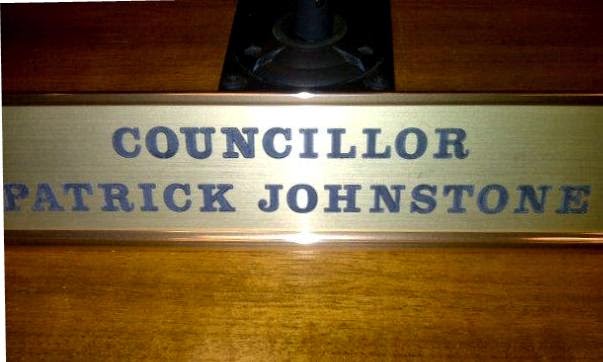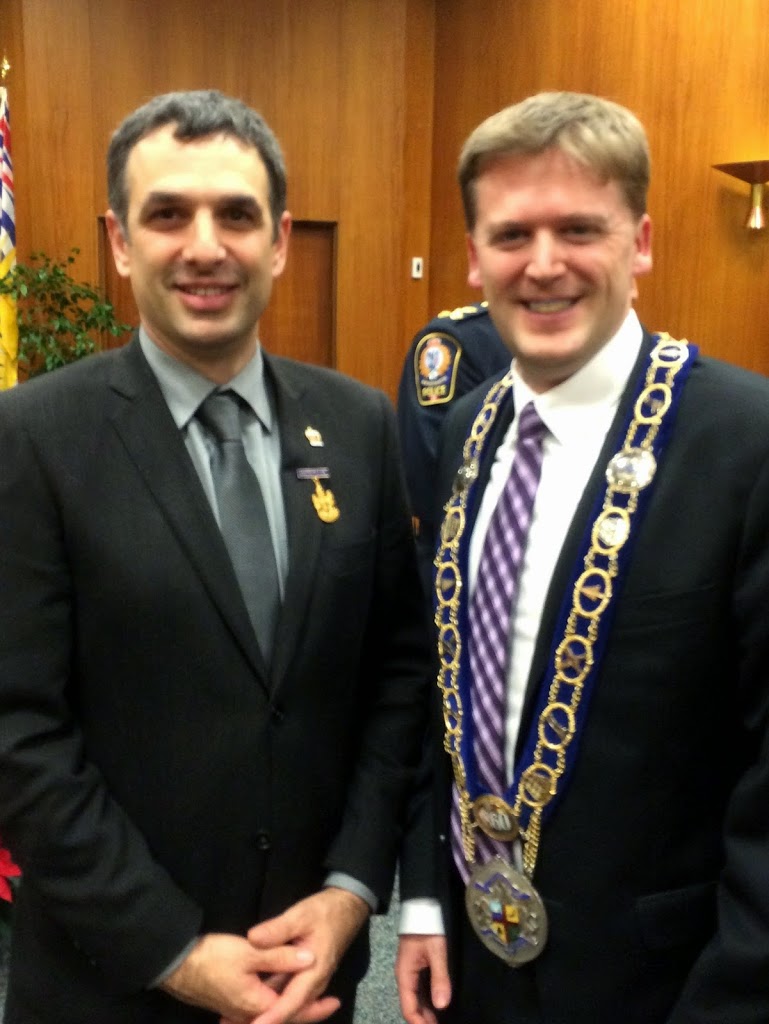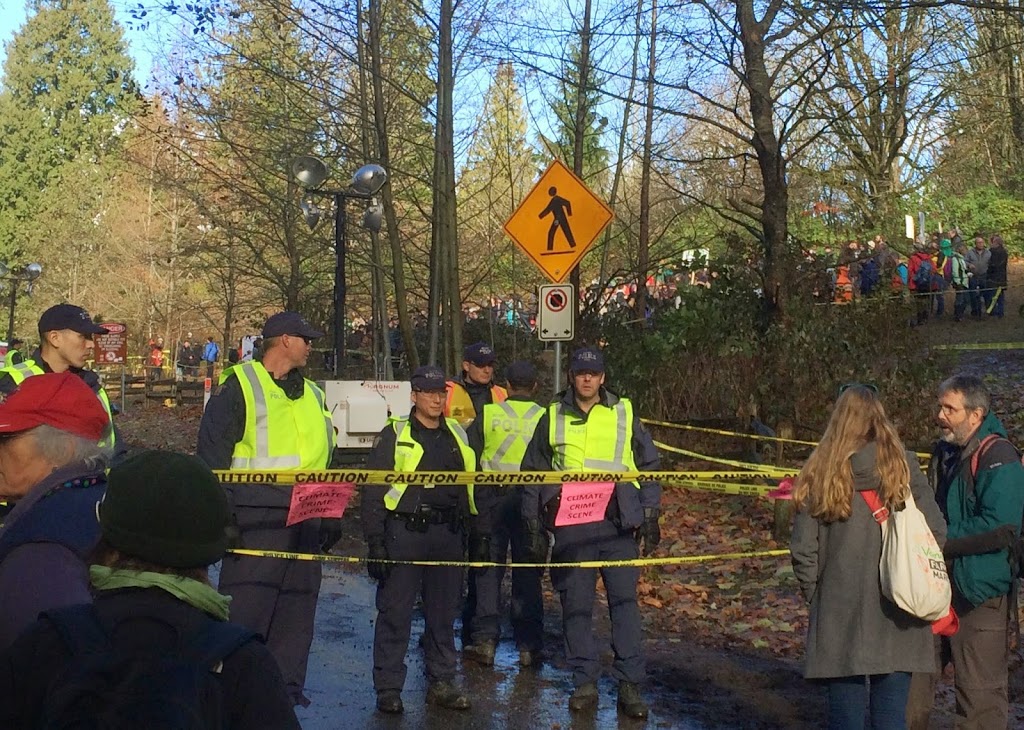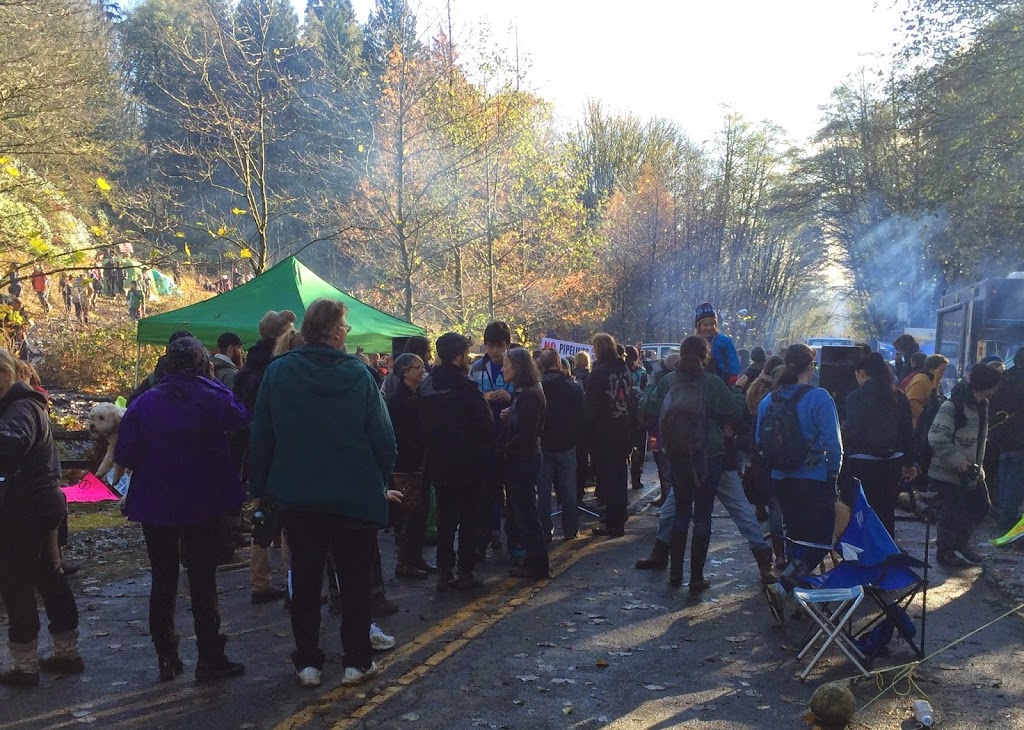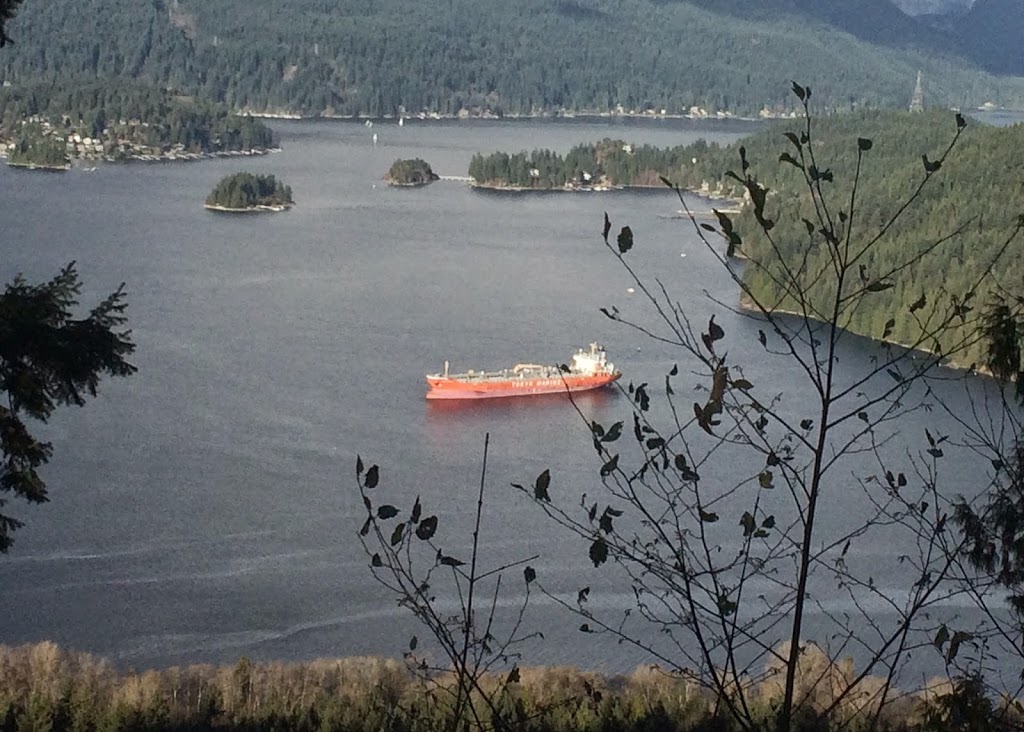We had our Second official Council meeting of the new term on January 12th, and I am sorry it took so long for me to get it together, but here is my “what we did in Council this week” blog post. I hope to get more timely on these things, but time is one thing I don’t have an excess of right now! Besides, we have to give the press a chance to get their scoops!
I added some “this is only my opinion, not the official position of the City or anyone else” caveats to the beginning of the last Council blog post, read them here if you wish to update yourself. I am going to skip past the delegations and announcements (you can see them on the video if you are so inspired), and launch right into the Recommendations from Council in Committee of the Whole:
Appointments to Committees
We had quite a long discussion in camera about this (lots of personal information about people, selected or otherwise, comes up in the selection process, so it is best done in camera). There were hundreds of applicants, and although a few committees had just enough applicants, there were other committees where 6 people needed to be selected from a pool of several dozen. Chairs of committees are given first crack at drawing up a short list, then we discuss as a group to make sure that there isn’t too much overlap (i.e. there are a few “star volunteers” in the City we would love to have on every committee, but we need to share and want to give new people a chance).
So if you applied and got selected, congratulations! If you applied and didn’t get selected, you probably had stiff competition, and please apply again next year!
Municipal Government Campaign Reform
It seems funny to be talking about this as all of the candidates (successful and otherwise) are currently preparing their financial statements for the last election. The timing of this entire exercise, consulting on changes to how municipal elections are governed in the middle of a local government election, was a bizarre idea. Regardless, Phase 2 of changes to the Elections Act provisions on local government elections are coming along.
I suspect I am going to be the New Westminster candidate who spent the most money getting elected to Council. There are various reasons for this: I was a “new guy”, so I had to spend more to get my name out there than some of the incumbents. It is also because my fundraising goals were more than exceeded: I didn’t think going in that I would receive as much financial support as I did. So some of it was planning, some was luck.
The province is considering campaign finance reform for Local Elections, including creating contribution limits (the maximum amount any one person or entity can contribute to any campaign) and spending limits (the maximum amount any one candidate can spend on a campaign). Although the official opposition tried to put rules around Corporate and Union donations into the mix for public engagement, the Government members of the Committee would not entertain those discussions at this time, so that is not included as part of this consultation.
After some discussion, it seemed to me most everyone on Council is in favour of some limits, but decided that we didn’t have enough information about the myriad of options for how a spending limit law would work. Different jurisdictions have different rules, and it would be good to know what would work here. (Should the same rule apply in every City from Vancouver to Spuzzum? Should spending be indexed by population, or registered voter? Does it include third-part spending? How could spending be distributed amongst party members, and informal “slates”?). Council will expect Staff to report back with a bit of a summary of what works and doesn’t in other jurisdictions. As no decisions will be made until the BC House sits again, and even then the proposed rules will not be put together quickly, we have a bit of time here.
RCH Economic Health Care Cluster
RCH is growing. The province has plans to expand and renew the hospital campus over the next decade or so. As the largest single employer in New Westminster and the foundation of Sapperton’s commercial district, the fate of RCH will have a profound effect on the future of New Westminster.
This was essentially an information report to let Council know about some of the groundwork being laid by the City’s planning and economic development staff to prepare the City for these changes. The Mayor has announced the formation of a Task Force to bring the economic development aspects of this project together and to help coordinate planning between the City and Fraser Health.
In my opinion, there are two parts to this file. First, the City needs to understand the potential for economic development that will come with this expansion, and make sure we are ready to seize the significant opportunities for job growth in the private sector that could come with the public sector job growth that will result. Secondly, we need to make sure the development of the hospital and associated businesses happens in a way that protects (and hopefully improves) the livability of the residential neighbourhoods on either side of East Columbia.
TransLink Mayors’ Council Referendum
It should be no surprise by now that I support the YES side of the upcoming TransLink transportation referendum plebiscite (damn, I’ll get it right eventually). Aside from all of the other reasons I have raised, the Plan aligns well with existing City of New Westminster plans and policies, including our Envision2032 Sustainability Plan, our new Master Transportation Plan, and our Official Community Plan.
This report from staff tidily summarizes the history of how the Mayors’ Council got to where we are now, and why the region’s Cities support the YES side almost unanimously. That support is shared with business groups such as the Vancouver Board of Trade, transportation groups like the Gateway Council, labour groups such as Unifor, and environmental groups such as the David Suzuki Foundation. The report also recommends that the City formally support the YES side, and prepare a communications strategy to promote the YES vote.
It is my firm belief that New Westminster, more than any other City in the Lower Mainland, will benefit from stable capital funding for public transit improvement. Our residents use Public transit more than any other, and the negative impacts of a failure to grow the system will be felt in New Westminster’s road network worse than anywhere else. The first thing people ask a politician or aspiring politician in New Westminster is “What can you do about the Traffic”? This is the first part of that answer. However, this vote also supports improved SkyTrain service, so those 8:00am trains arriving at New Westminster Station will be more frequent and slightly less crowded. It also supports putting more busses on the roads, so that New Westminster can turn the tide on having bus routes cut and service reduced (we actually had a delegation at this meeting requesting that a service recently “rationalized” by TransLink be restored for the good of the elderly residents of Uptown).
The communications work would be coordinated through the new Mayor’s Task Force on Transportation, which I means I am setting myself up for more work here, as I am on that Task force! There is quite a bit of detail in the communications plan attached to the report, and it hits many of the major points that have been identified by others.
As I stated at Council (and Councillor McEvoy eloquently expanded upon) the biggest push leading into the referendum is not messaging, it is getting every single person who rides transit registered to vote so they will get a ballot in the mail. That needs to be the big push up until the end of March. Renters, young people, students, low-wage workers and the unemployed are the groups that would benefit most from improved transit service, and they are the ones least likely to be registered to vote – the mail-in ballot is designed to disenfranchise them.
So how about you? Are you registered to vote? If not, you are unlikely to receive a ballot. If you are unsure, go to this website and check if you are registered today. It takes less than 5 minutes.
Do it. This is a great way to spend the time you waste standing at a bus stop, wishing that buses were more frequent.
Amendment to Council Schedule
There are no items ready to go to Public Hearing on January 26th, so there will be no public hearing on that date. Adjust your calendars and delegation schedule appropriately.
101 third Street Tenant relocation Strategy
Urban Academy has plans to expand their campus, as the current Robson Manor no longer fills their needs. Their preliminary plans include preservation of Robson Manor and infilling the lot with a second classroom building. This will require a Heritage Revitalization Agreement and an OCP amendment. Those processes are going on, but there still needs to be some work done and a Public Hearing is yet to come, so it would be highly inappropriate (arguably illegal) for any member of Council to talk in favour or against the proposal at this time.
This report came to Council to describe a tenant relocation plan for a rental building on the UA property that will need to be razed to make room for the school expansion. Council decided (and I concurred) to defer any comment on this plan until after the Public Hearing, so that Council opinions about this relocation plan are not seen as prejudicing the larger redevelopment plan.
Child Care Amenity Provision Request
The City gets money from developers when they build new buildings. As authorized in the Local Government Act, the City can receive a payment for allowing density increases, and can use that money to provide amenities to the community that would be needed or desired as density increases. In New Westminster, part of that money goes into a fund earmarked to provide daycare spaces – not for the day-to-day operation of daycares, but capital costs related to the set-up of self-sustaining child care facilities.
With recent growth, downtown is lacking in daycare spaces, and especially affordable daycare spaces. It is also home to a high percentage of lower-income and single-parent families, those who would benefit most from nearby daycare. The School District, the City and the Ministry of Education partnered to provide space in the new Ecole Qayqayt Elementary School for daycare spaces, and the LMPS (a not-for-profit that runs several daycares in the City) was contracted to operate the daycare. They require a small capital grant to properly equip the daycare, and are asking the City to grant $40,000 from the Child Care Amenity Provision Capital Reserve Fund.
This is what the fund was set up for, and it is always easier to grant funds when the City’s contribution is part of a larger partnership. As LMPS is spending more than $180,000 setting up the Daycare, the Ministry of Education has provided about $500,000 worth of building (that would have cost more than twice as much if it hadn’t been part of a new school project). This is good value for the money we get from developers; it was easy to vote for this.
Our City Neighbourhood Visioning Process
It is Official Community Plan Time. The City has already done a fair amount of public outreach on a consultation as part of what they have branded the “OUR CITY 2041” process. This report outlines the next stage in Community consultation: a Neighbourhood Visioning event, where stakeholders, a committee of volunteers and staff will work together with the guidance of a consultant to create a vision in drawings of the City of New Westminster in 2041.
I encourage everyone to take part in the OUR CITY 2014 process. It is going to take another year and a half before we have a shiny, new OCP completed, so there will be lots of opportunity for input. You should take every opportunity you get – if you are reading this blog, you probably care about the future of the City, so you are the person we need helping create the new plan.
Save the Date for the Valentines day weekend: as there will be events all weekend around the Love Our City Visioning Workshop.
420 St. George Street Heritage Revitalization Agreement
This is a request for direction from staff to move forward with the permitting process for this infill heritage project. A historic house will be restored, and a lot split to permit the construction of another house. This is only the first stage, and Neighbourhood and Committee Consultation will occur before final approval, so I’ll reserve my comments for now.
Port Royal Phase 6 Property Line Adjustment
This is a part of the Port Royal development, where land under the waterfront walkway currently belongs to the developer, and parts of land to be developed currently belong to the City. The plan is to adjust the property line so that an equal amount of land is exchanged between the developer and the City. Because of the Community Charter, there is public notification required, and this report is Staff asking Council to permit that notification. The final exchange can only occur after public notice, and after the plan is brought back to Council. Watch for this notice, coming soon to a City Page near you!
Utility Rates Bylaw Amendment
Rates for solid waste aren’t going down folks. We aren’t the highest in the Lower Mainland, nor are we the lowest. Remember, if you have a 240L black bin, and find yourself not filling it (because all of your organics are going in the green, and all your recycling is going in the blue), you can trade your 240L for a 120L, and immediately save yourself $100 a year!
Correspondence
There were two pieces of correspondence (of the 5 received) discussed:
The first is from residents who are impacted by smoking on neighbouring balconies within a Strata complex. I have some sympathy for this issue, as it was a major point of contention for @MsNWimby and I when we (briefly) lived in Langley back in the early 2000s. The smoker downstairs didn’t want to fill their own apartment with smoke, so she went out on her balcony, and filled our apartment with smoke.*(see note below)
We asked Staff to let us know about the jurisdictional issues here. Yes, there is a new Bylaw regarding smoking, but generally Municipalities don’t get involved in disputes between Strata neighbours (expecting that issues should be resolved by the Strata Board). The issue of air quality / smoke / odours is also not one a City Government in the Lower Mainland would normally address, as MetroVancouver has the delegated power, the Bylaw to enforce that power, and staff and resources to do the job under their Air Quality Regulatory Program. So I asked for Staff to report back on exactly what the City’s role is here.
The second piece of correspondence was form the Mental Health Commission of Canada, providing al ink to the reports of their successes, and encouraging Cities to adopt a Housing First approach. New Westminster has already adopted such an approach, to some significant success. Council asked that this report be forwarded to the City’s Social Planning department and the NWPD, as a prelude to further discussions around a National Mental Health Strategy.
Public Engagement Taskforce
This is the final of four task forces proposed by the Mayor, and Council endorsed the Terms of Reference. Staff will now work with the Mayor and Council Representatives (myself and Councillor Trentadue) to recruit community representatives.
Alberta Street
Councillor Puchmayr added this issue to the agenda, after several of us received correspondence from concerned residents on Alberta Street (you can read a summary of their concerns here).
I did go out to Alberta Street last weekend, and I recognize Saturday traffic is not the same as rush hour traffic, but I always want to see the geography of an issue. Alberta is (to my eye) a functioning, narrow neighbourhood street. It is narrow enough that speed control should normally not be a big issue, as there simply isn’t room for two cars to pass comfortably, and it obviously does not have the space to carry a lot of traffic.
There are three issues here, all related, but we shouldn’t conflate them.
Traffic volume: Several ideas were discussed around restricting turns at the foot of Alberta as was suggested. The downside to this would be a few people on Alberta complaining their usual route to work/school/shopping is restricted (traffic management always ends up being personal!) and the potential that we would just push the traffic (new, and local Alberta Street folks) over to Simpson or Keary, and we will be in the same spot 2 months from now with a new group of neighbours. If the “easy route” out of the Brewery District is the problem, then perhaps just not allowing access to Alberta from the BD is the way to go, creating a treatment rather like what is at the foot of Simpson. This may have less impact on the travels of Alberta Street residents, and solve some of the problem.
Speeding: Partly because of the narrowness of Alberta, I am wondering if the recent increases in speeding issues are related to a few frequent users, and not a general over-all traffic trend. A recent survey by staff indicated that average speed is only 37km/h, but it only takes a small percentage of irresponsible drivers to really change the perception of speed and the actual safety. This may be improved with paint or pavement treatments, but if it is a few bad apples, a bit of directed enforcement by the NWPD might help. I don’t think anyone would object to making Alberta (and the streets parallel to it) 30km/h zones.
Brewery District: The third factor here is the longer-term traffic management around the BD development. This is going to come to a head soon (if Council approves the next phase of the project) as parking and traffic problems often crop up as early as first construction – the people building the building have to park somewhere. Staff will report back on a traffic plan for both the construction phase and for the build-out of the brewery District, and on why there is no direct access from Brunette (I suspect I know the answer, but I need to ask).
I do want to clarify the “band aid” comment. We can look at a cheap immediate change to address the complaints in the Paper, but that will have effects on neighbouring streets, and will in turn be affected by any potential changes at the Brewery District. So we need a plan that covers more than just Alberta Street, and thinks ahead. However, doing that long-term planning should not preclude doing a quick fix in the meantime, if it is cheap and easy to do. Until the cure is found, a band-aid might help.
Wait for Me Daddy Lighting
Councillor Williams asked that staff look at installing spotlights to highlight the three primary figures in the new Wait for me Daddy installation in Hyack Square. This led to some discussion around the multi-coloured lights, including quite the little twitterstorm. For the record: I don’t like the multi-coloured lights, as I think it takes away from the seriousness of the piece, but they are part of the Artist’s vision, so who am I to say?
Bylaws
We had one Bylaw for adoption: The Revenue Borrowing Bylaw that saw three readings at last meeting. It passed unanimously. It is now the Law of the Land.
The amendment of the Engineering Users Fees discussed above needs a Bylaw, so it was brought forward for three readings. All passed unanimously.
Meeting Adjourned
*: follow-up correspondence clarified for me that the issue here was not just balcony-drift smoke, but smoke travelling through the inside of a multi-family building, through air systems and through the hallways. This actually makes things slightly more complicated (people are smoking inside their own apartment) and simple (the MetroVancouver Air Quality Bylaw probably doesn’t apply).




